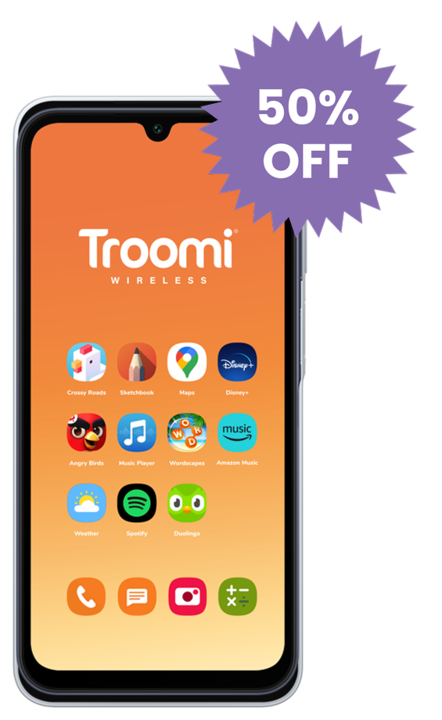Video games often get a bad rap. But if you take precautions to keep your child safe, video games can be fun and sometimes educational outlets to relieve stress or just relax. Unfortunately, there are still risks from the contents of the games themselves. Let’s look at what makes for safe video games and how to vet new games for your kids, plus some alternatives to keep your kids entertained.
While there are many activities that can be better for kids than video games, chances are that even if video games aren’t allowed in your household, your kids will be exposed to them by friends at their house or school. I know I’ve seen toys based on video games at Target and Walmart, some even based on video games rated for teens or adults. That exposure, and potential curiosity, draws kids in, but what are ways that we, as parents, can keep our kids safe with current games?
Do Video Games Have Benefits?
When your kids tell you that video games are good for their health, they aren’t that far off. Dr. Rashmi Prakash (Psychologist) compiled some positive impacts that video games can have, such as improved decision making, teamwork, and hand-eye coordination. Video games also offer kids the opportunity to share mutual interests with other kids who play. APA also found that video games can help with spatial skills, try-failure learning, and developing creativity.
These are the benefits, but what about the risks?
What Are the Risks?
When looking at video game exposure’s effect on kids, WHO has found that there is a risk of developing a “gaming disorder” for people who play video games. Like with all tech addictions, gaming disorder can impact home life, school, and work for all ages. The signs for gaming disorder include, but aren’t limited to, feelings of frustration or depression when not playing, not being able to quit or even decrease play time, losing interest in other hobbies, lying about how much time is spent playing, etc.
Want to keep video games (including phone games) out of the hands of kids? Troomi phones are filled with KidSmart™ apps that allow you, the parent, to set time limits on how long the apps can be used. That way your child can still have a smartphone with all the important features and limited access to the distracting features.
Another risk of video games is exposure to adult content. Kids like popular games, but some popular games are rated M for mature (meaning 17+). There are stories of parents blindly buying games for kids, not realizing that the game is designed for adults. A concerning example is the Deadpool game. Deadpool is a popular comic book character and parents purchased the games with assumptions that because of the source material, the game would be fine for kids. Unfortunately, the Deadpool game was rated M because of hyperviolence, language, and sexual content. You might remember a similar thing happening with the Deadpool movie. Parents took their children to see a comic book movie and then were horrified by the explicit content on the big screen. What about other modern video games? Is Fortnite bad for kids? Let’s look at some ways to check which video games are safe, including battle games for kids.
Let’s Look at the ESRB Rating System.
Paying attention to video game ratings is important. Video games are rated by their age appropriateness based on content. This rating system goes as follows: E (everyone), E 10+ (everyone 10+), teen (13+), M (mature 17+), A (adults only 18+), and RP (rating pending). (Every game sold as a physical copy is required to have a full rating so RP would be replaced with the final rating at release.) It’s important to note that ratings can’t guarantee your child’s safety when it comes to online interactions within the game. Each rating includes a content description of what qualifies it for its rating. For example, Deadpool is rated for blood and gore, intense violence, mature humor, sexual content, and strong language. That’s a lot of graphic content. So how did parents end up purchasing the game for their kids? Let’s look at some things beyond the ratings we can do to keep our own kids safe.
Safety Beyond the Rating.
As parents we can use the ESRB rating system to determine which games are appropriate for our child’s age range, but as we’ve found out, sometimes we miss critical things. For example, games sold digitally online might not be rated. So what can we do? An important part of knowing if the games your children play are safe or not comes down to research, experience, and your child’s maturity.
Online Reviews – There are resources online where parents and kids have rated games for their content and age appropriateness. These sites include Net Aware and Common Sense Media, but those aren’t the only sites available. You can also go over online quality reviews and ratings on sites like Amazon.com.
Experience – Reading online reviews only goes so far. A critical part of understanding the appropriateness of a game is to experience it. While this doesn’t always mean playing it for yourself, you should have an idea of the contents. You can sit with your child while they play, look up let’s plays online, or talk with friends or relatives about their personal experience with the game. Your first-hand experience, or even the first-hand experiences of those you trust, is valuable.
Maturity – When gauging if content is appropriate for your child, it’s important for you to know their maturity and comfort level. Minecraft is rated 10+ for fantasy violence, but my nephew, who’s 11, is scared of zombies and so the game makes him uncomfortable. But while he doesn’t like the zombies in Minecraft, he loves the engineering element of the game. Getting to know your child’s maturity and comfort levels can help you know what games will best fit your child.
There’s a Brand New Game Out That My Kid Wants, Should I Get It for Them?
Here’s some helpful things to keep in mind when deciding whether or not to get a game for your kid.
Online Connection – ESRB can’t guarantee the contents of online interactions. This is what makes online chat rooms and social media dangerous as well. Strangers can interact with your children. There are online games that take measures to keep kids safe, so make sure to research what precautions have been taken.
Time – Video games can be a huge time waster. Anything in extreme amounts can be dangerous. Be aware of the time your child spends playing video games. Want to set limits on your child’s gaming (at least on their cell phone gaming? Troomi makes it easy to set time limits on cell phones with their Parent Portal.
Creativity – There are hundreds of games out there, but some have little to no benefits for our kids. “Fall Guys” was extremely popular but did nothing to inspire a child’s creativity or mind. Having fun can be its own reward, but with so many options, consider finding a game that does more for your kids than entertains them. Check out today.com for some kid-approved games.
What are Some Alternatives to Videogames?
Healthygamer.gg has compiled a good list of alternatives to video games for kids, and, critically, things that don’t work. Let’s look at some of the top (including some of our own).
Books – Now, at first glance, books feel like a natural replacement for video games, but they are usually a miss for kids because they are slower paced. How could you make it work for your family? Libraries and bookstores carry many books that are based on games. If your kids are curious about games that they aren’t able to play, let them read books (still check the content beforehand). This will help them learn important reading skills while still feeling engaged with a hobby they enjoy.
Toys – Similar to the books, toys aren’t a one-to-one replacement for most kids who are looking for a more fast-paced style of entertainment, but it can help scratch that itch for things that are off-limits. Deadpool (both the movie and the game) are too mature for children, but an action-figure is safe to play with.
Competitive sports (thrill rides) – To match the adrenaline rush of some games (such as action or shooter games), competitive sports, martial arts, rock climbing, or roller coasters can be a great replacement. They provide thrills and a way to build new skills.
Learning to Code – If kids play turn-based strategy games or do redstone engineering in minecraft, learning to code can be exciting. They can learn coding, understand how it works, and develop needed skills to succeed in that field.
Current Popular Games
While your kids might ask, “What is more popular: Minecraft, Fortnite, or Roblox?” What you should be asking as the parent is, “Which is better for kids: Fortnite or Minecraft?” or “Is Fortnite bad for kids?” You might even ask what is the most kid friendly game on Roblox? These battle games for kids have their pros and cons, but if the video game has online interactions, it’s likely not safe for kids. Roblox is designed to look like a kid game, but it’s not kid friendly (watch our blog for upcoming information on why). Out of the three most popular games for kids, Minecraft is my personal pick for safest and most educational.
Let’s Stay Safe
We want our families to be safe, even when having fun, and keeping an eye on what they consume is an important step. The world is changing quickly, with tech in everyone’s hands, and Troomi wants to help with exactly that. See Troomi for more info on staying safe in this tech world and what kind of smartphone is best for them.


